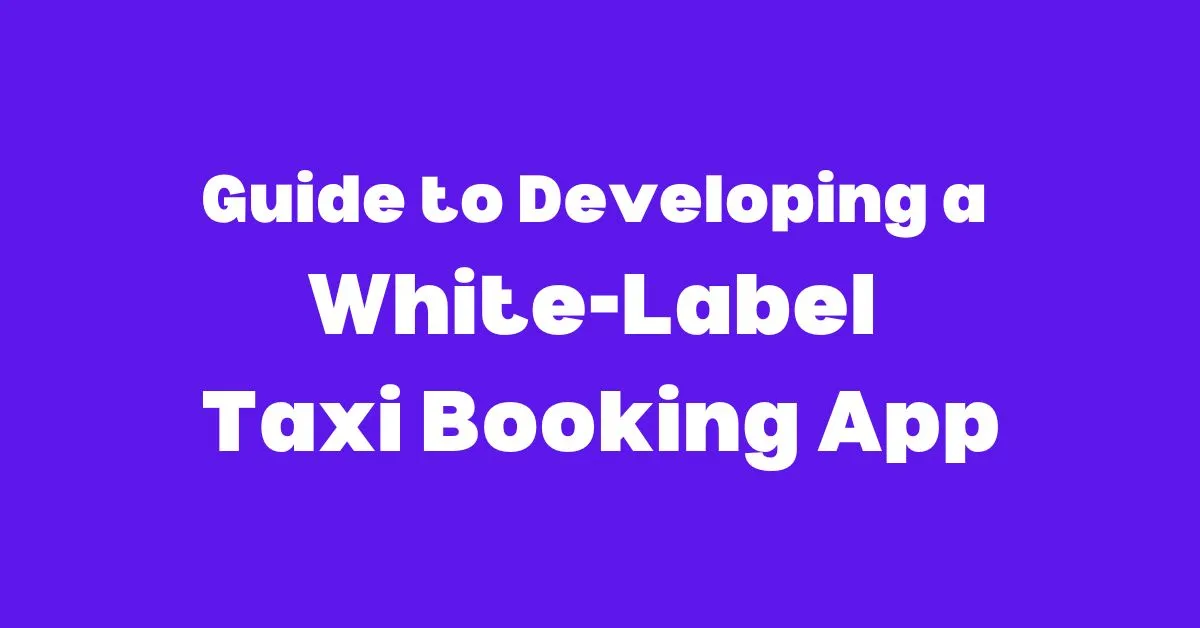In today’s fast-paced world, the demand for convenient transportation services has skyrocketed. A white-label taxi booking app offers entrepreneurs an efficient way to enter this thriving industry without starting from scratch. This guide walks you through every essential step of developing a white-label taxi booking script with apps, its benefits, and how it can revolutionize the taxi booking experience.
What is a White Label Taxi Booking App?
A white-label taxi booking app is a pre-designed and fully customizable solution that allows businesses to launch their taxi services quickly. These apps come with essential features like ride booking, GPS tracking, payment gateways, and admin management panels. The white-label approach means you can rebrand the app with your company’s logo, colors, and design preferences, giving the appearance of a custom-built solution.
Benefits of Developing a Rebrandable Taxi Booking App
1. Cost Efficiency
Developing a taxi booking app from scratch can be an expensive affair, involving significant investment in technology, design, and development teams. A white-label solution reduces these costs by offering a ready-made platform that can be customized as per your needs. This allows businesses to focus on their core operations and marketing strategies without exhausting their budgets.
2. Quick Time-to-Market
In the competitive ride-hailing industry, timing is critical. A white-label app eliminates the lengthy development process, enabling you to launch your business quickly. By using a pre-built framework, you can cater to market demand and establish your presence while competitors are still planning their strategies.
3. Customizability
White-label apps are designed to be flexible, allowing businesses to incorporate their brand identity seamlessly. From logos and color schemes to additional features, every aspect of the app can be tailored to reflect your business vision. This ensures that the app resonates with your target audience and stands out from generic solutions.
4. Technical Support
Operating a taxi booking app requires continuous technical maintenance to address issues and ensure smooth functionality. With a white-label app, businesses often receive ongoing support from the solution provider. This includes updates, troubleshooting, and security enhancements, saving you from managing a dedicated technical team.
5. Scalability
As your business grows, so do your requirements. A white-label solution can scale to accommodate increased user activity, advanced features, and expanded service regions. This scalability ensures that your app evolves with your business, providing a long-term solution for your operations.
Steps to Develop a On-Demand Taxi Booking App Solution

1. Identify Your Business Needs
Before diving into development, analyze your target market and define the services you aim to provide. Whether it’s daily commutes, corporate rides, outstation trips, or parcel delivery, understanding your niche will help you choose the right features and design for your app.
2. Choose a Reliable White-Label Solution Provider
Selecting the right provider is crucial to the success of your app. Look for providers with a proven track record, positive client reviews, and a robust technology stack. Ensure they offer essential features like GPS tracking, multiple payment integrations, and admin panel management.
3. Customize the App to Fit Your Brand
Work closely with the provider to customize the app according to your brand’s identity. From logos to color schemes and feature adjustments, every detail should align with your vision. Personalizing the app enhances brand recognition and creates a unique user experience.
4. Rigorous Testing for Quality Assurance
Testing is an essential step to ensure the app functions seamlessly. Perform tests for GPS accuracy, payment gateway performance, app loading times, and overall user interface. Identifying and fixing bugs during this stage will prevent future disruptions in service.
5. Launch and Market the App Effectively
A successful launch requires strategic marketing efforts. Use social media platforms, partnerships with local businesses, and app store optimization to promote your app. Offering initial discounts or referral bonuses can also help attract early adopters.
Why Choose a Customizable Taxi Booking App?
Custom app development is often expensive and time-consuming. A white-label solution, on the other hand, provides a pre-built platform that can be adapted to suit your business needs. The cost-effectiveness, faster deployment, and reliability of white-label apps make them an ideal choice for startups and small to medium-sized businesses.
Essential Features of a Private-label Taxi Booking App
1. User-Friendly Interface
A straightforward and intuitive design is critical for attracting and retaining users. The interface should be easy to navigate, with clear instructions for booking rides, accessing payment options, and tracking trips. A clean layout enhances the overall user experience.
2. Real-Time GPS Tracking
GPS integration ensures that users can track their rides in real-time and drivers can navigate efficiently to their destinations. This feature boosts transparency and builds trust by keeping both riders and drivers informed about the journey.
3. Multiple Payment Options
Offering diverse payment methods, such as credit/debit cards, mobile wallets, and cash, enhances convenience for users. This flexibility caters to a broader audience, ensuring that payment preferences are not a barrier to using the app.
4. Ride Categories
Giving users the ability to choose from different ride categories, such as economy, premium, or shared rides, caters to varying budgets and preferences. This feature makes the app versatile and appealing to a wider range of customers.
5. Advanced Admin Panel
The admin dashboard is the backbone of the app’s operations. It allows for efficient management of bookings, driver profiles, user data, and revenue reports. A well-designed admin panel simplifies operations and ensures seamless service delivery.
6. Push Notifications
Push notifications keep users informed about ride statuses, payment confirmations, promotions, and important updates. They also serve as a valuable marketing tool for encouraging user engagement and retention.
7. Surge Pricing
Implementing surge pricing helps optimize earnings during peak demand. This dynamic pricing model adjusts rates based on demand, ensuring driver availability and maximizing profitability for the platform.
8. Driver and Rider Ratings
A rating system promotes accountability by allowing users and drivers to provide feedback. This feature helps maintain service quality and ensures that issues are addressed promptly, fostering trust in the platform.
Conclusion
Developing a white label taxi booking app is an excellent way to capitalize on the growing demand for ride-hailing services. With minimal investment, businesses can establish a strong presence in the market and provide a seamless transportation experience. Focus on selecting a reliable solution provider, incorporating user-centric features, and staying updated with industry trends to ensure long-term success.


